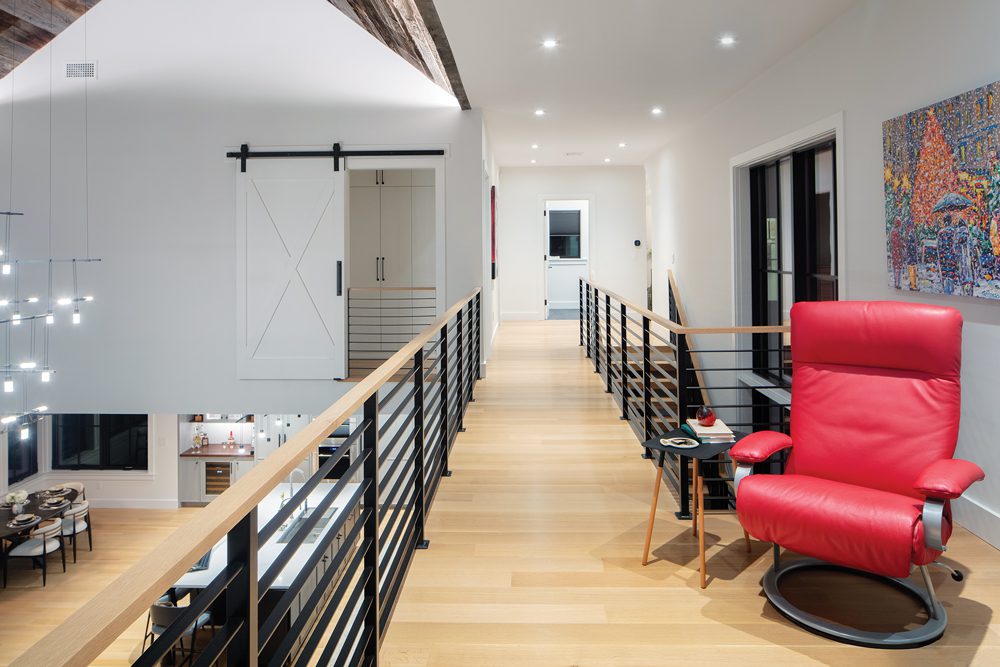Fashionable Fusion
Writer Marirose Krall | Photographer Peter Dressel | Architect Andrew Passacantando, AIA | Location Harding Township, NJ | Build and Interior Design Jerry Iacouzzi, Bespoke Builders Group LLCA Morris County home represents a fresh take on Modern Farmhouse style
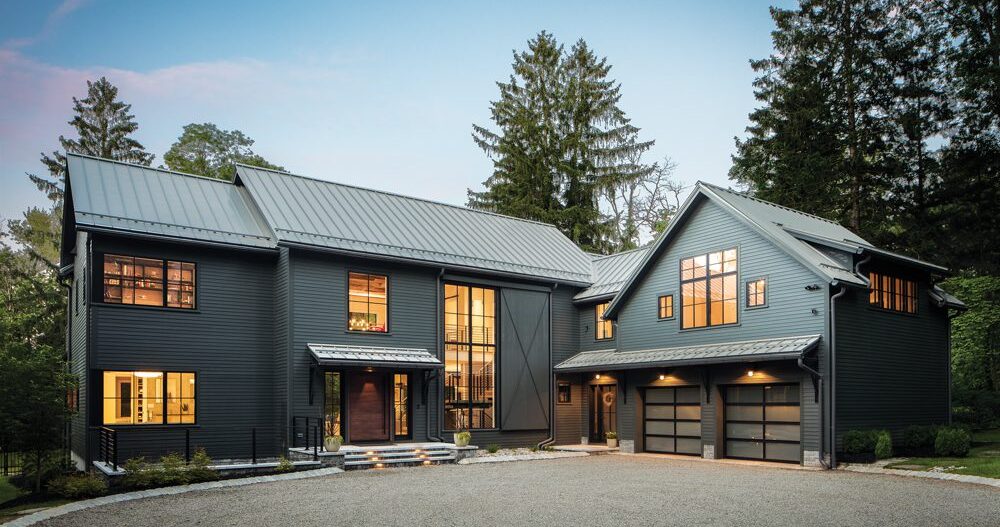
The new home features barn-like elements, such as a large, X-detailed panel reminiscent of a barn door, along with more contemporary components, such as glass garage doors. Architect Andrew Passacantando adds, “The oversized front door features a large pivot system that’s custom made to match the exterior details.”

Andrew Passacantando Passacantando Architects | Morristown | 973-267-1052 AndrewPassa.MyPortfolio.com
Jerry and Marietta Iacouzzi wanted a change when they decided to build their new home in Harding Township. “We had been living in a very traditional home since 1996,” he says, “so we wanted something more modern.” Jerry, owner of Bespoke Builders Group LLC in New Vernon, enlisted the help of a longtime friend, Andrew Passacantando, owner of Passacantando Architects in Morristown, to design the new home, and that design went through a bit of an evolution. “We started off with the currently popular concept of ‘modern farmhouse,’” Iacouzzi says, “but as we built and incorporated various elements, I started to refer to it as ‘warm modern.’ We have some farmhouse elements, but the style leans toward the modern side.”

The back of the home features large windows to maximize views. Entrance to the balcony at right is from the office/second-floor primary bedroom. The stone wall marks the exterior wall of the first-floor primary bedroom’s fireplace. That stone is also used as a foundation material on the front façade and on the patio walls.
Design NJ: The owner calls this a Modern Farmhouse. Which elements reflect the “modern” aesthetic and which reflect the “farmhouse” aesthetic?
Andrew Passacantando: It has an aesthetic reminiscent of some of the farm homes in the area. The dark siding and matching trim give the house a subdued and monochromatic façade that blends in with the landscape, similar to an agricultural barn. The dark-framed windows feature large glass areas with few divisions, similar to those on a farmhouse. We used what looks like a large, sliding barn door on the front façade. It’s a fixed panel, but it’s built and detailed the way a barn door would be. The standing-seam metal roof — a dark gray — is also reminiscent of early barn detailing. The two-car garage features custom glass overhead doors for a contemporary look.
DNJ: What was the concept for the floor plan?
JI: Essentially, we wanted all our living space — the primary suite, living room and kitchen — on the first floor. The second floor would be used for my office suite and guest bedrooms. We were looking to downsize, which we didn’t really accomplish from a square-footage perspective. [The home is 4,000 square feet, exclusive of the finished basement.] But from a “size-of-living” perspective, I feel like we did. Since we live mostly on one floor, the house “lives” small.
AP: The open-concept plan creates the feeling of a larger house. The two-story living room is the primary seating, TV and entertainment space. It opens to the patio and pool as well as to the kitchen. The elimination of a separate family room and dining room provided more floor space for one larger entertainment area.
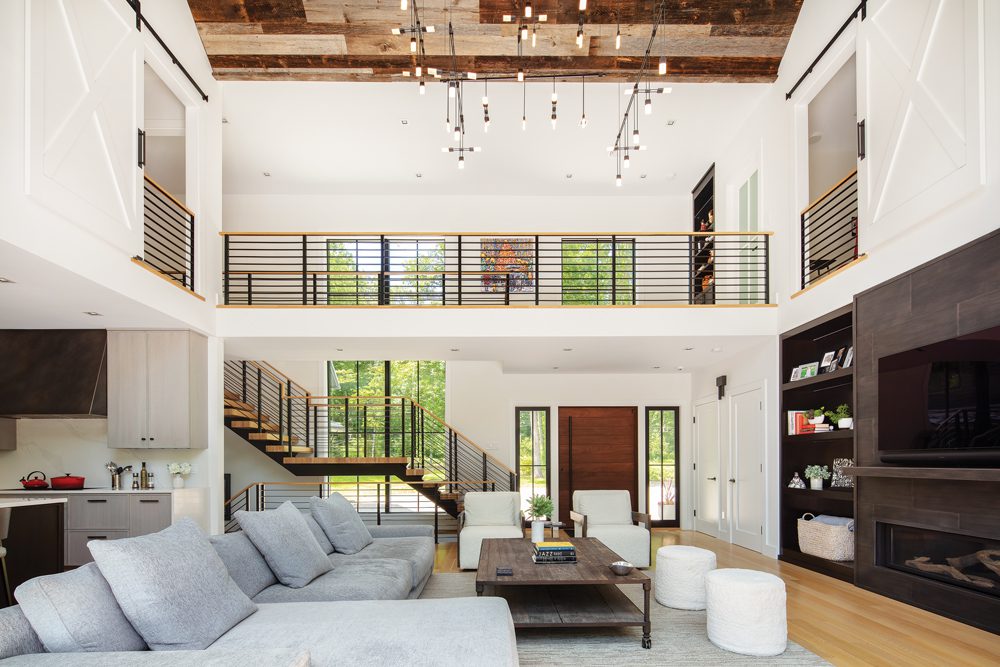
The open-riser staircase next to the living area is visible from the street through the large front window. The stair and catwalk railings repeat the horizontal black metal found on the exterior railings. Barn doors on the second floor, similar to the one on the exterior façade (though these are operational), mark the office/second-floor primary bedroom at right and a linen closet at left.
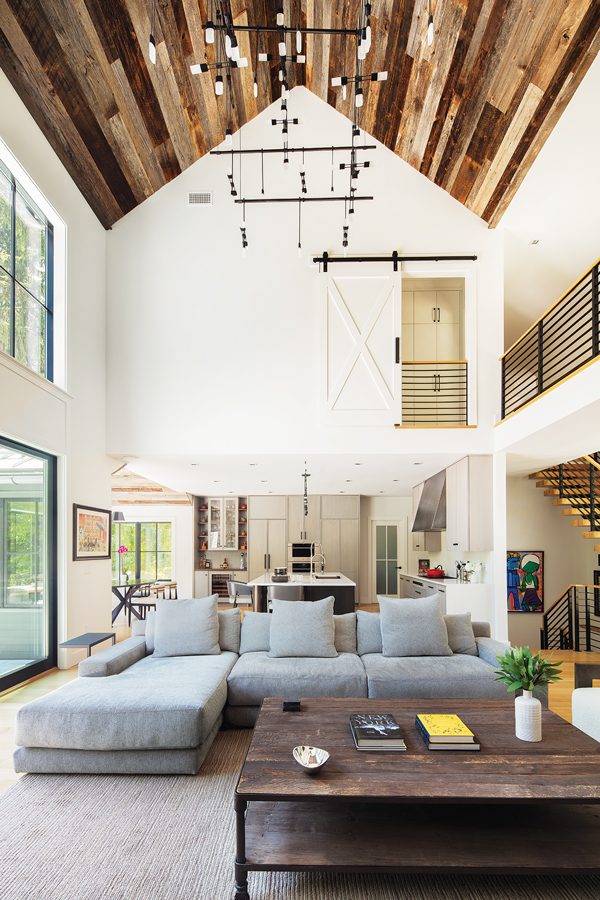
“We used a custom chandelier over the two-story space,” Passacantando says. The fixture helps fill the expansive volume of the room without interrupting the airy aesthetic. Iacouzzi adds, “We spent a lot of time on lighting selection, opting for square recessed lights and other modern fixtures that we felt best fit into our design motif.”
DNJ: What was the aesthetic goal for the interiors?
AP: The interiors are a big contrast to the dark exterior. They’re bright and open with high ceilings; they’re very contemporary. Because they are contemporary, we thought “why not run with white paint throughout” for a gallery- or museum-like look. The oak, open-riser floating staircase and the steel horizontal balusters contribute to the contemporary look. The upper ceilings are detailed with reclaimed barn siding to add some barn aesthetic and to contrast with the otherwise all-white interior. Sliding barn doors on the second floor reinforce the farmhouse theme.
JI: My wife was very concerned about the interiors being too modern. So, while our choices tended toward clean lines and simple colors, we looked at combining elements to warm up the lines. Some of the design themes we incorporated within the “warm modern” motif include black accents, a linear fireplace with a burnished copper finish for the living room, an oversized mahogany door, reclaimed barn wood ceilings, white oak flooring, neutral paint colors and modern but subtle light fixtures.
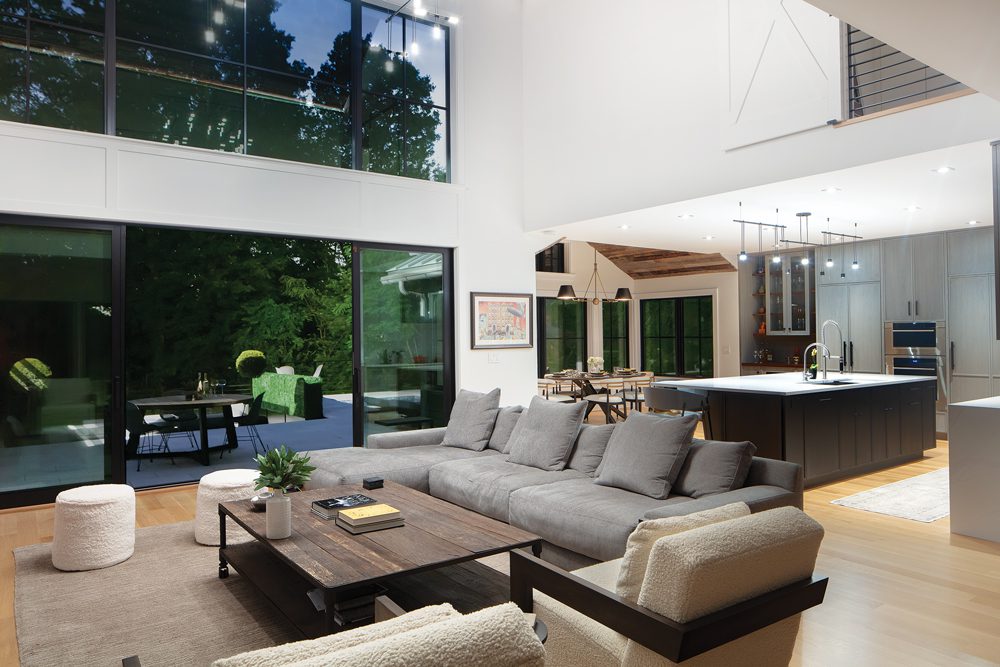
The large living/kitchen area opens onto the back patio, which has a fire pit and a plunge pool. “It’s set up for entertaining,” Passacantando says. “It’s not set up in what we would consider a traditional footprint.”
DNJ: How did Jerry’s role as both homeowner and builder affect the design/build process?
JI: My career has been in management consulting, and this was my first major foray into building from the ground up. As the builder, I was able to be intimately involved in every decision: architecture, construction and design. And since I was building for myself, my choices often (always) skewed toward not cutting any corners. I worked closely with our architect, who has been a friend since high school. We started with a crude diagram that I drew in PowerPoint and ended up, after many iterations, with our dream home.
AP: Based on that diagram, we used advanced software to create the house digitally — with all the exterior and interior details — long before construction was underway. This gave the homeowners reassurance that the aesthetic, layout and overall scale matched their vision.



